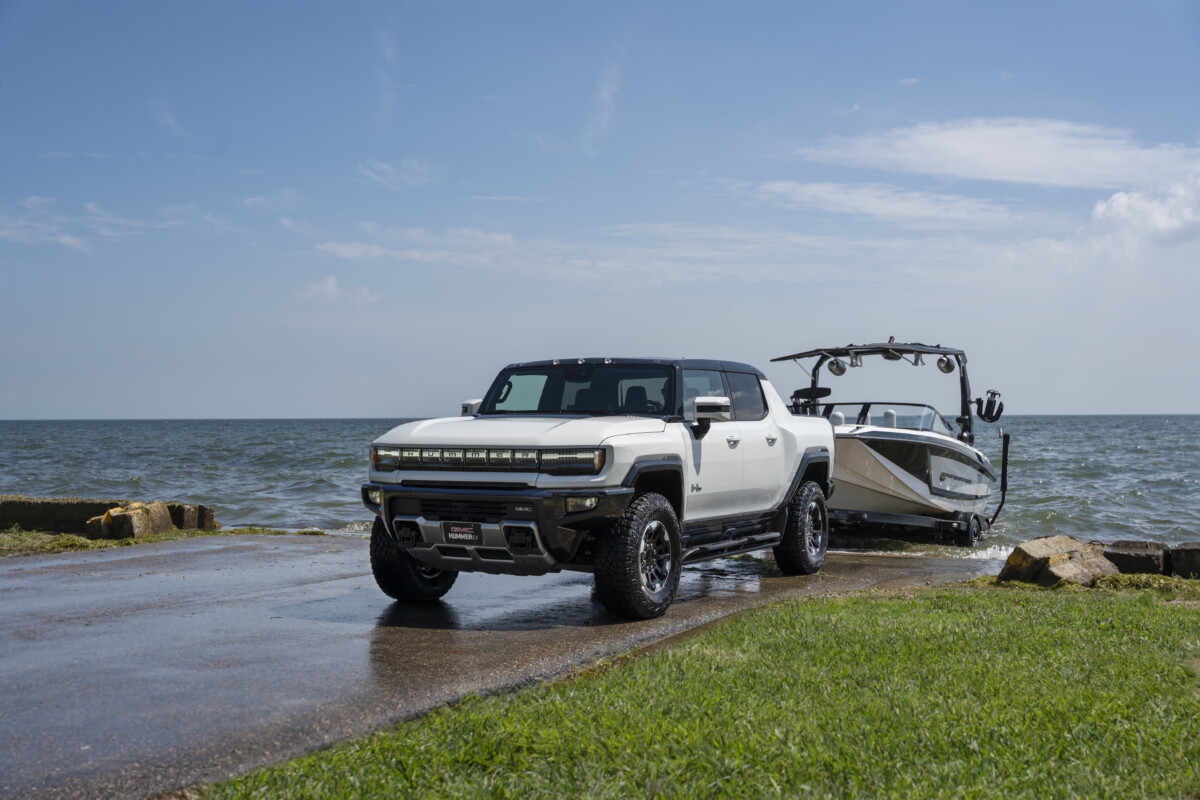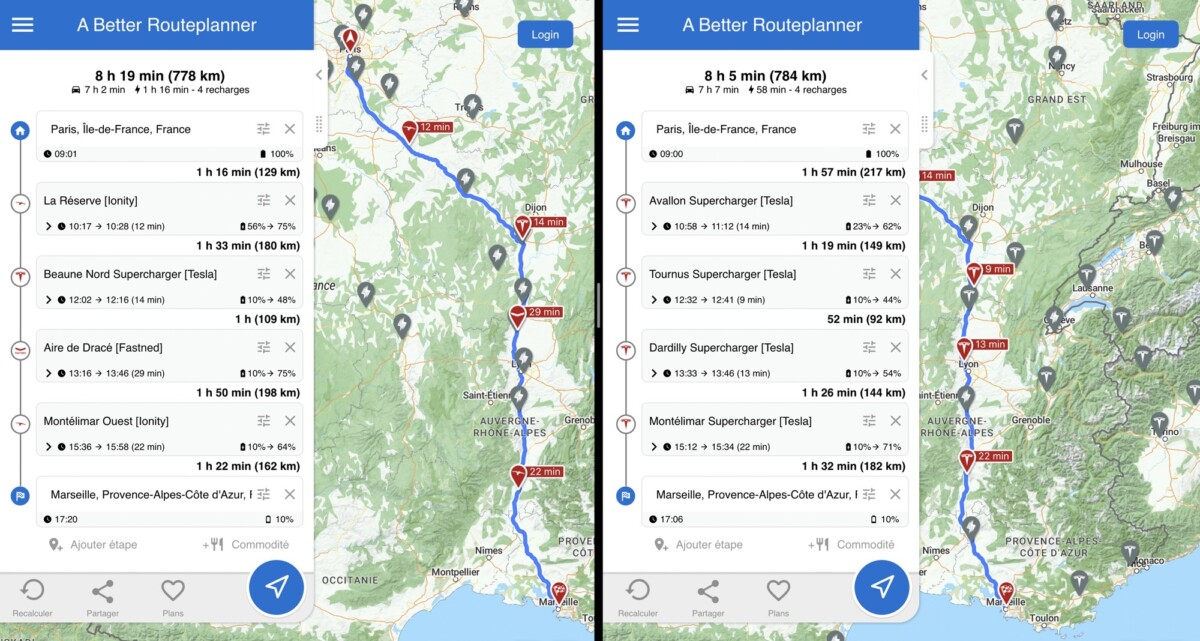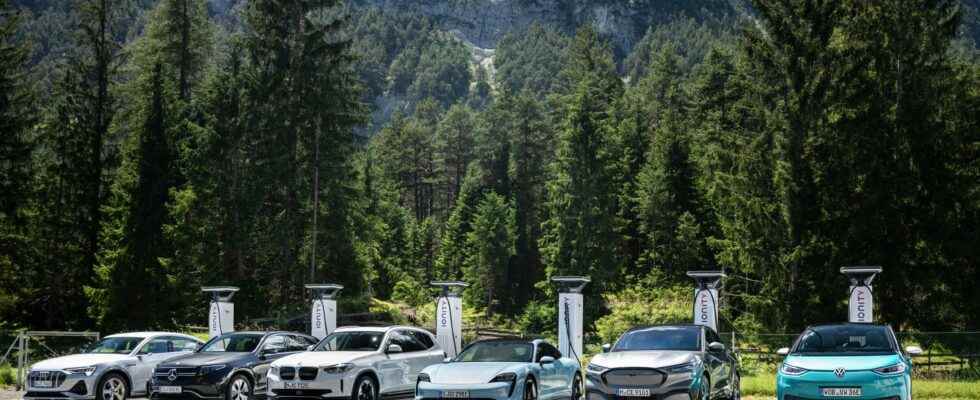What if the most interesting electric vehicles were not those with the greatest possible range? We’re going to look at some common misconceptions about electric car battery range and size in this feature.
Traveling by electric vehicle is not always easy, but some connected cars are doing very well in this exercise. Which formula is best suited to covering hundreds of kilometers as quickly as possible? Is a big battery necessary, or, on the contrary, having a car with ultra-fast charging is preferable?
We will try to provide some answers by going back to the conceptual differences between an XXL battery and a faster-than-lightning recharge. We will see that some electric cars with a smaller battery allow you to reach your destination more quickly, even if it means that long journeys are more expensive.
Finally, we will talk about innovative solutions such as swapping batteries to minimize journey times when they exceed the actual range of the vehicle. Without further ado, let’s take a look at the pros and cons of a large on-board battery in an electric car.
Large battery does not necessarily rhyme with long autonomy
Quite naively, we may think that to increase the autonomy of an electric vehicle, it is necessary and sufficient to increase the size of its battery (expressed in kWh). This is because the energy needed to run an electric car is stored in the battery, and the more there is, the further the car can go. However, a big enemy comes with a bigger battery: weight.
The current energy density makes it possible to equip medium-sized cars with a battery of around 70 to 80 kWh, as is the case on a Tesla Model 3, Hyundai Ioniq 5 or even MG ZS EV, while displaying a weight total between 1,700 and 2,200 kilograms. These battery packs weigh around 450 kilogramsand significantly increasing their capacity would amount to offering increasingly heavy vehicles, thus implying higher consumption.

A vehicle weighing more than 3 tons which would have a 210 kWh battery, for example, would not allow it to travel 800 kilometers without stopping, as shown by the examples of electric pick-ups carrying a huge battery for, in the end, not not have significantly greater range than smaller vehicles.
This is the case of the Hummer EV with its range of 530 km on the American EPA cycle (about 600 km in European WLTP) and its 212.7 kWh battery. By way of comparison, the Tesla Model 3 Long Autonomy and its smaller 80 kWh battery offers a similar autonomy, thanks to its more moderate consumption.
However, a larger battery in certain vehicles that optimize their consumption has a real interest, and this is the reason why we find variants of Renault Mégane e-tech, Kia EV6 or Tesla Model Y with different battery sizes. Note however that the increase in autonomy is not in the same proportion as the increase in battery size.
For example, a Tesla Model Y Long Range has a 33% larger battery than that of the Tesla Model Y Propulsion (80 kWh against 60 kWh), but a autonomy only 17% greater (533 km against 455 km). Consumption thus goes from 14.9 to 16 kWh to travel 100 km, because of the increased weight (+ 247 kg) but also of the second engine (for the four-wheel drive), which adds a little consumption.
We will also see that carrying a larger capacity battery pack is not always the key to arriving at your destination as quickly as possible during long journeys.
Bigger battery doesn’t mean faster ride
During our examples of long trips in different electric cars, we highlighted the fact that some trips were ultimately longer with a vehicle that had WLTP range and a larger battery than another.
The recharging speed is of course taken into account when you travel several hundred kilometers and there is a need to recharge the vehicle, but efficiency is also a major factor. This is why we find in particular the Tesla Model 3 Propulsion in the examples of vehicles considered as champions of fast charging, while it only sports a 60 kWh battery.

If we compare it, for example, to a Volkswagen ID.4 with its 77 kWh battery, the simulation of a Paris-Marseille journey does indeed give the Tesla Model 3 Propulsion as arriving in Marseille in the lead, with nearly fifteen minutes of ‘advance. Consumption is 33% higher on this trip for the Volkswagen SUV, not allowing it to take full advantage of its advantage in terms of battery capacity.
The best of both worlds in terms of efficiency and battery capacity is currently to be found in the Mercedes EQS, which has no 100% electric rival so far. Traveling 1,000 kilometers in an electric car is never faster than with the German sedan, but you will have to accept its XXL price.
And if you also take into account the speed of charging, then it is the Kia EV6 that is best able to make long journeys as quickly as possible. Indeed, it manages to recover 70% of its battery in 18 minutes, against 30 minutes for the Mercedes EQS. Provided you find such fast charging stations on your route. The future Hyundai Ioniq 6 should do well with a potential first place for its speed on long journeys.
We will see that it is however possible to save money on long trips when you take advantage of a larger battery.
A higher price to buy, but savings in use
There are indeed vehicles equipped with an XXL battery with a strong interest, whether for daily use without having to recharge frequently, or to limit stops during long journeys. Indeed, with the price of fast charging only increasing, being able to travel hundreds of kilometers in one go can be very economical.
Thus, charging at home is equivalent to a price of between two and three euros per 100 kilometres. On the highway, fast chargers transform the bill into 10 to 20 euros for 100 kilometers.
These savings in use, which can be around 70 euros for a journey of 500 kilometers, should be taken into account when buying a vehicle, to give you an idea of the cost in use. We also have a series of files simulating journeys crossing France in different electric vehicles, summarizing the associated costs.

Daily consumption will however be higher with a vehicle with a larger battery, due to the greater weight. However, this higher consumption will be financially insignificant if you charge at home at night, where kWh is cheap compared to roaming charging operators.
Be careful, however, not to deceive yourself, the some 17,000 euros that separate, for example, a Tesla Model Y Grande Autonomie from a Propulsion will not be filled before hundreds of thousands of kilometers of long motorway journeys. Financially and in the medium term, the less expensive versions remain more interesting, even if it means putting a little more hand in the pocket during the few annual journeys exceeding the autonomy of the vehicle.
The future of fast charging nevertheless seems set to be even more expensive than today, and vehicles allowing you to arrive safely without stopping to recharge are increasingly attractive. Another way of traveling begins to point the tip of his nose, not requiring recharging: the exchange of batteries. Let’s see if this service has a future in our region.
The exchange of batteries, a service of the future?
Coming straight from China where it has met with some success, battery swapping is a simple concept, which allows you to get back to 100% in a few moments. This requires having a vehicle designed for this operation, such as the Nio ET7 or ET5, or even the future electric vehicles of the MG group.
In practice, battery swapping only takes about five minutes to see its freshly attached battery at 90% charge, where a quick charge will take about 18 to 30 minutes to be only 80% charged. charge. The main advantage therefore lies in the speed of the maneuver, which can be compared to the duration of a full tank of gas.

However, while fast charging is increasingly expensive, battery swapping is not necessarily less expensive. Indeed, manufacturers offering battery exchange currently only do so on the condition of renting the battery of their vehicle, for a cost of around 1,600 euros per year (price for the Nio ES8).
In addition, the density of battery exchange stations is currently very low, when we are not in a country that does not yet offer them. If more than 1,000 stations are planned in the medium term by the giant CATL in Europe and elsewhere, there are currently only a handful in Norway, which greatly limits the interest for the inhabitants of the old continent. A new station has just opened in Germany.
The future will tell us if this battery exchange service will be popular outside of China or not, but to date, it absolutely does not exempt you from having a large battery as the stations are so rare.
Indeed, if we take the example of the Nio ES8, the electric car managed to cover 1,000 km on the highway in 9 hours thanks to the battery exchange. But 11:25 on the same trip with fast recharges (without battery exchange)! Compare to the 9h15 needed for the Tesla Model 3 Performance to complete the same exercise with fast recharges.
Conclusion
As we have seen, a bigger battery in an electric vehicle does not only have advantages. The theoretical autonomy displayed is greater, but in practice, if consumption is higher due to the greater on-board weight, you will not arrive at your destination any faster.
Smaller batteries have the advantage of making it possible to offer a vehicle at a more reasonable price, and the additional cost generated during long journeys remains insignificant. A big battery is actually synonymous with comfort and peace of mind in everyday life and on long journeys rather than a necessity for travel.
The density of fast charging stations has been increasing significantly for many months, with new players arriving on the market, making the concern for charging while roaming obsolete. Finally, in the interest of limiting the carbon footprint of the electric car, choosing the one with a smaller battery makes sense : from manufacture to use, it is more ecological than a larger battery.
To follow us, we invite you to download our Android and iOS application. You can read our articles, files, and watch our latest YouTube videos.


